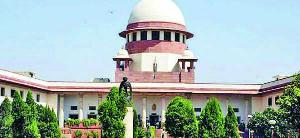 New Delhi, Nov 9: The Centre will move the Supreme Court on Saturday to challenge the Gauhati high court's sensational judgment declaring that the Central Bureau of Investigation (CBI) was not set up legally and had no power to investigate an offence, arrest accused and file charge-sheet.
New Delhi, Nov 9: The Centre will move the Supreme Court on Saturday to challenge the Gauhati high court's sensational judgment declaring that the Central Bureau of Investigation (CBI) was not set up legally and had no power to investigate an offence, arrest accused and file charge-sheet.
Minister of state for personnel V Narayanaswamy met attorney general G E Vahanvati on Friday to fathom the legal basis of the HC judgment and both agreed that an appeal should be filed in the SC by Saturday, pointing out the errors apparent in the verdict.
Even if the Centre files the appeal on Saturday, it is likely to be listed for urgent mentioning before the SC on Monday. The Centre will request the SC to stay operation of the HC judgment as an immediate measure to keep the CBI functional.
The AG is understood to have conveyed to the government that the HC had erred in inferring that the CBI was set up without legal sanction and that the Delhi Special Police Establishment (DSPE) Act did not support the existence of the premier investigating agency.
The Centre's lawyers, who will be burning the midnight oil to get the appeal ready and get it vetted from authorities in time to reach the apex court registry on Saturday, feel Section 2 of the DSPE Act provided the source of authority to the CBI to function as a police organization and exercise its powers akin to state police under the Criminal Procedure Code.
Section 2 empowers the Union government to set up a special police force to investigate notified offences and members of such special force would enjoy "in relation to the investigation of such offences and arrest of persons concerned in such offences, all the powers, duties, privileges and liabilities which police officers" are generally conferred with.
In contrast, the HC had focused on the 1963 resolution of the home ministry and termed it legally insufficient as it had not received the assent of the President. Moreover, it had said that the DSPE Act nowhere talked of an organization named CBI.
On November 6, a Gauhati HC division bench of Justices I A Ansari and Indira Shah had upheld the constitutional validity of DSPE Act but ruled that "the CBI is neither an organ nor a part of the DSPE and the CBI cannot be treated as a 'police force' constituted under the DSPE Act".





Comments
Add new comment